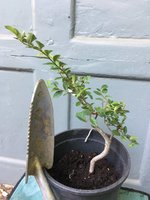@nboisvert
I agree, as an "old fogey" myself, I have occasionally been guilty of just parroting the adage that trees MUST be outdoors. I've grown orchids indoors for over 40 years, and settled in on the technology of 25 years ago as "all I needed" for the groups of orchids I grow. My knowledge base is stuck in the HPS, Metal Halide and T-12 phase of the hobby. In 2008 I toured several LED growing set ups, in Anchorage, that were woefully inadequate, and dismissed LED as technology having poor potential.
In 2015 got called to consult for a disease issue for a licensed medical marijuana growing operation and was shocked at the revolutionary improvement in the quality and intensity of modern LED lighting. I know now, it IS POSSIBLE to grow just about anything under lights, as light intensity is no longer the limiting factor.
Ficus and many tropical & subtropical trees can be grown successfully under lights, as can the more subtropical junipers like J. procumbens. Trees from zone 7 b and warmer climates can be kept growing under lights in winter without much trouble.
However for some trees, other factors become limiting. For example many trees depend on large diurnal temperature changes to slow their resting metabolism at night so they can accumulate and store energy for growth. Indoors our temperatures are fairly constant, which my guess is one of the reasons pine trees are difficult indoors.
So yes, explore the wide array of trees that can be grown under lights. Recognize that new technology is coming out weekly. And be willing to experiment.
Also, you are in Canada. There's a good number of excellent species for bonsai native to Canada. Check out the Amelanchier species, jack pines, and Thuja. All the juniper species, including shimpaku are hardy into zone 4. Your local native Junipers horizontalis is quite good, look for Nick Lenz examples of J. horizontalis styled as upright trees for "proof of concept".


